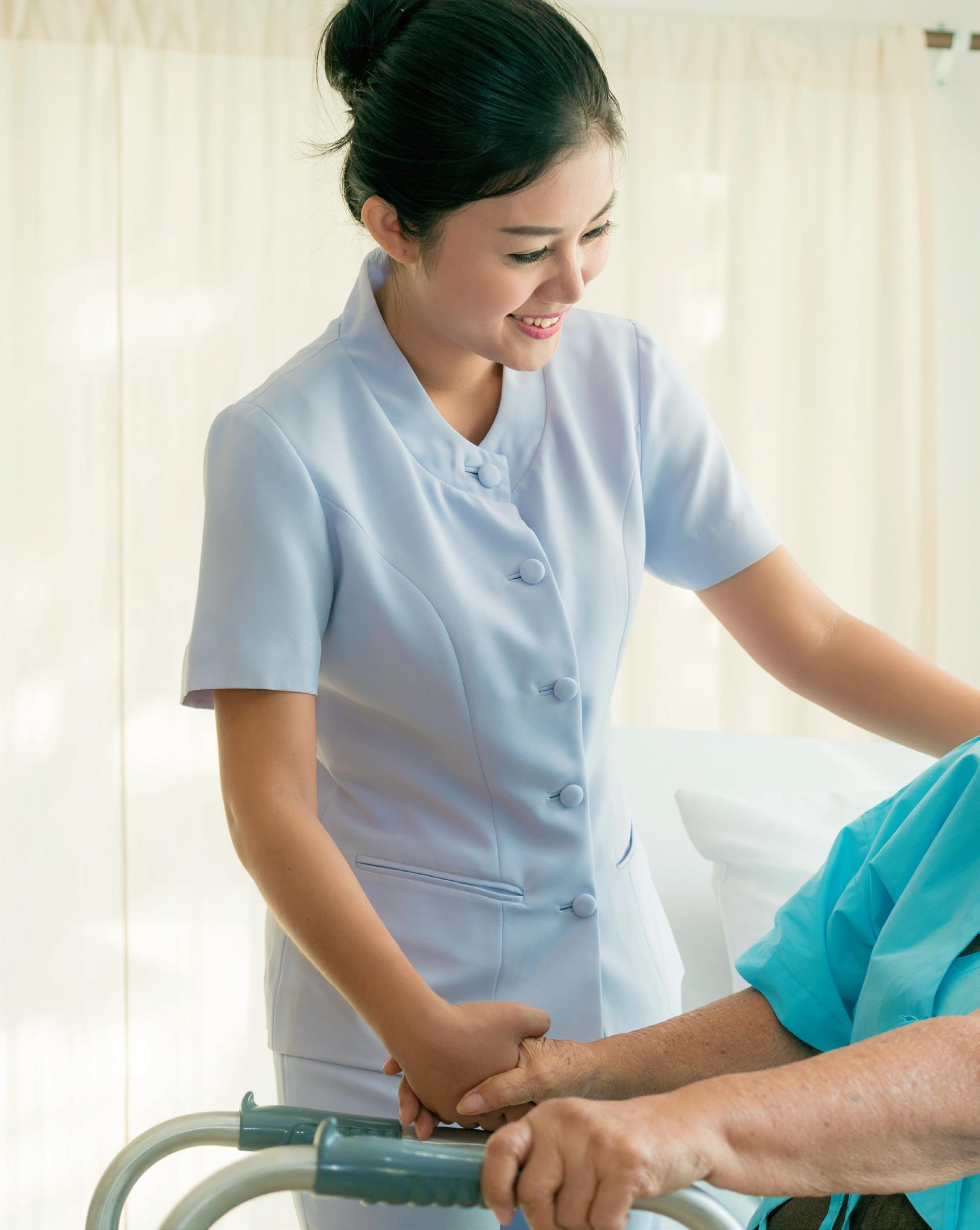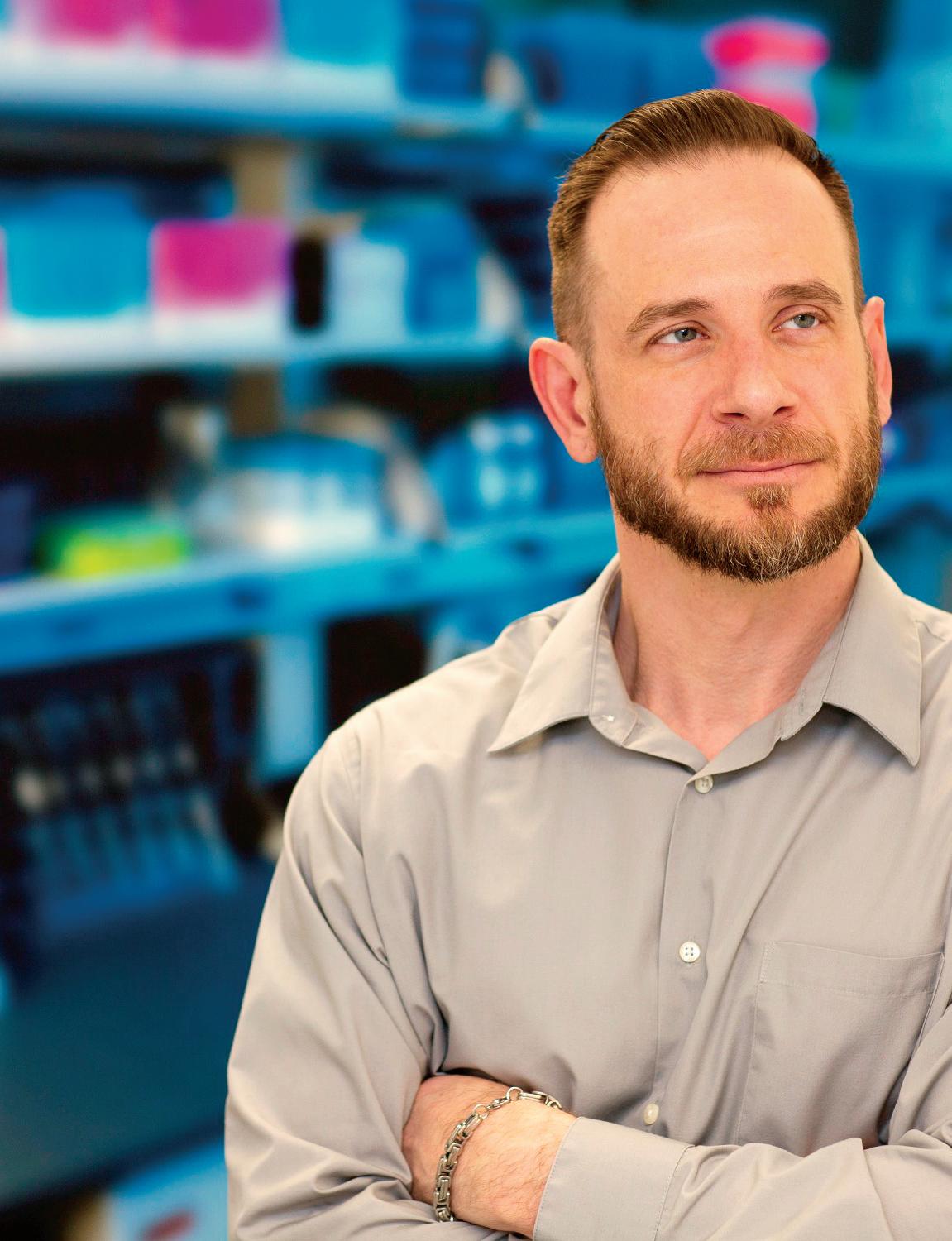
5 minute read
Empowering Women Through Caregiver Training
The United States has a higher immigrant population than any other country in the world. And though political debates in recent years have laid emphasis on Hispanic immigration, it is in fact Asian Americans, Native Hawaiians and Pacific Islanders (AANHPI) that have become the fastest-growing minority group in the United States.
According to New American Economy and the 2017 American Community Survey, the AANHPI population jumped from 7 million in 1990 to 17 million in 2010. And by 2017 that number has grown to over 22 million – an increase
of over 25 percent.
For comparison, between 2010 and 2017 the overall US population only increased by 5.3 percent.
Many families in the AANHPI community have lived here for multiple generations, in addition to the significant number of newcomers who have come for work, opportunity, and to be closer to family members already living in the United States.
While AANHPI represent the fastest-growing minority group in the US, there is another segment of the population that is growing even faster – the old. According to the
National Institute on Aging, the number of Americans aged 65 and over is expected to double in the next 25 years, and those ages 85 and older represent the fastestgrowing segment of the US population – fully expected to grow from 4 million to nearly 19 million by 2050.
When considered side-by-side, these statistics paint a clear picture of a rapidly growing group of individuals aged 65 and older who speak many languages, come from many cultures, and may not be entirely comfortable in their new homes as they face their final, and sometimes most difficult years of life. Life-expectancy may have significantly increased, but the diseases and conditions that effect the oldest members of our society have hardly disappeared. Many of this generation will need at-home care – a task that will often fall to the women in their families, at the sacrifice of their own comforts and career opportunities.
According to the National Center on Caregiving, 65 percent of seniors with long-term care needs rely exclusively on family and friends for assistance – and 66 percent of caregivers nationally are female.
In 2015, over 34 million Americans said they had provided unpaid care to an adult age 50 or over in the previous 12-month period, and the economic value of the service provided by unpaid, informal caregivers in the United States is estimated in the hundreds of billions each year.
In fact, in 2013, the estimated value of unpaid caregiving was $470 billion – more than the value of paid home care and total Medicaid spending combined.
Family support and at-home care allows individuals to stay in the comfort of their homes for as long as possible. When family members seek additional help for their aging family members, finding a day-time caregiver who can speak and understand their regional language and respond to their cultural environment can be extremely difficult.

In Arizona, inquiries to local caregiver institutions have confirmed a high demand for caregivers with regional language skills, and the inability to meet that demand. The Asian Pacific Community in Action organization (APCA) sees an opportunity to empower women within the AANHPI community to leverage their language skills and train and qualify as paid caregivers.

APCA is a non-profit organization headquartered in Phoenix, who serves Asian American, Native Hawaiian, Pacific Islander and emerging communities in Arizona. By providing services and training, their mission is to empower individuals and families to build a brighter future through seeking better physical health.
Professional caregiving provides many advantages to women looking for employment opportunities – especially women in minority populations with excellent regional language skills but a low proficiency in English, which may make finding other employment more difficult.
Caregiving roles can often be part-time and flexible in hours and scheduling, making it ideal for women looking to earn additional income while balancing multiple other roles and needs – whether caring for young children and other family members at home or supplementing an existing job.
Work as a caregiver can require minimal additional training and education, making it an accessible, lessexpensive career path for families who lack the time and resources to commit to more extensive programs.
Many are also drawn to caregiving roles due to a compassionate nature, and find it rewarding to provide such a needed service for individuals and families. Caregiving, after all, is a vocation as well as means of making a living. Rather than a simple list of tasks, caregivers are also companions, story-tellers, listeners, chefs, drivers, personal stylists, and so much more.
Communication is key in any relationship, and a strong language barrier can make senior care more frustrating and difficult for both parties. Additionally, seniors in need of care, and their families who love and support them, are more likely to accept and respond to a caregiver who speaks their language and understands the values and traditions of their culture.
Caring for patients in their native language gives women an opportunity to leverage their language skills as a distinct advantage over other care providers, and such a foundation for trust can greatly increase the comfort, enjoyment, and quality of life for their patients.
For all its challenges, caregiving can be a fulfilling and enjoyable career, and provide a great sense of personal accomplishment and satisfaction. By providing women in immigrant and minority populations with additional training, they are able to provide financial support for themselves and their families, as well as a much-needed service to the fastest-growing group in the nation.
By Prakash V. Kotecha, MD, MSc, Asian Pacific Community in Action (APCA), pvkotecha@apcaaz.org , and Dominique Perkins, Maricopa County Medical Society (MCMS), dperkins@mcmsonline.com







